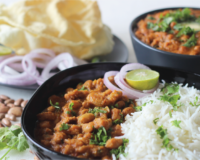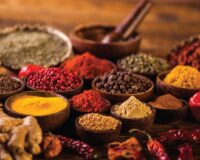The year 2023 has been officially declared as the International Year of the Millet by the United Nations after a proposal led by India, which wants to represent itself as the global hub for millets. Millets, which are full of nutrients and were once a neglected component of traditional Indian cuisine, are currently enjoying a global renaissance.
“Resilient grains like millets offer an economical and nourishing alternative as the global agrifood systems struggle to feed a growing global population, and efforts must be stepped up to promote their development,” says the Food and Agriculture Organization of the UN.
According to our government’s notification from 2018, research has revealed millets to be an effective defense against diabetes and that they are a powerhouse of nutrients. Also, in order to make it easier for consumers to grasp its advantages, the government has changed the name of the product from coarse grains to Nutri cereals.
1. Millet cultivation and environment
In India, millets are thought to have been grown from ancient times. Given that millets are grown on nearly 30 million acres in India, it is clear how important they are as a source of human sustenance. In areas with little rainfall, millets are typically cultivated with another crop, usually one of the legumes. The majority of millets produced in our nation are of short duration, taking three to four months from sowing to harvest.
Since millets are rain-fed crops, they don’t need standing water in their fields, thus there’s no need for large dams, reservoirs surrounded by woods, or complex canal systems to supply water to the farms. Millets can grow well and produce a good harvest without the use of insecticides or fertility boosters. In essence, millets have a much smaller environmental impact than wheat or paddy.
2. Health benefits of millets
Millets have been a staple food for many countries including Asia and Africa for thousands of years. Millets are naturally gluten-free grains and have numerous health benefits.
- Millets include a lot of fiber, which helps with digestion and keeps you from getting constipated. They also have a lot of complex carbs, which give you long-lasting energy and support stable blood sugar levels.
- Millets are rich in vitamins and minerals, including iron, magnesium, and B vitamins. These nutrients are essential for the proper functioning of the body and play a crucial role in maintaining good health.
- Millets have a low glycemic index, which means they are digested slowly and do not cause a rapid spike in blood sugar levels. This makes them an excellent choice for people with diabetes or those trying to manage their weight.
- Millets are rich in antioxidants, which protect the body from harmful free radicals and reduce the risk of chronic diseases such as cancer, heart disease, and Alzheimer’s disease.
- Millets are nutritious grains that can be incorporated into a balanced diet to provide numerous health benefits. They are versatile and can be used in a variety of dishes, making them a great addition to any diet.
The nutritional profile of millets
Millets are starchy grains, making them high in carbohydrates like most cereals. In addition, they include a number of vitamins and minerals.
A cooked millet cup (174 grams) contains:
- 207 calories
- 41 grams of carbs
- 2.2 grams of fiber
- 6 grams of protein
- 1.7 grams of fat
- 25% of the Daily Value for phosphorus (DV)
- 19% of the DV for magnesium
- 8% of the DV for folate
- 6% of the DV is iron.
Compared to most other cereals, millets supply more necessary amino acids. The components of these substances are what make up proteins.
3. Antinutritional Factors in Edible Crops
Antinutritional factors are compounds present in edible crops that hinder the absorption of nutrients, leading to reduced bioavailability and potential nutrient deficiencies. These factors include saponins, tannins, phytic acid, gossypol, lectins, protease inhibitors, amylase inhibitors, and goitrogens. Their interactions with nutrients are a significant concern, impacting overall nutritional quality.
Effects on Nutrient Bioavailability
Antinutritional factors in crops, such as trypsin inhibitors and phytates found in legumes and cereals, compromise protein digestibility and mineral absorption. This reduction in nutrient availability can contribute to micronutrient malnutrition and mineral deficiencies, posing challenges to human health.
Phytic Acid: A Notable problem
Phytic acid is a major obstacle to human nutrition due to its chelating properties. Additionally, polyphenols contribute to its gray coloration and diminished nutritional value. Compounds like C-glycosyl flavone and their metabolites are associated with its goitrogenic properties, further affecting health.
Antinutritional Factors in Millets
Different types of millets contain varying antinutritional factors:
Pearl Millet: Tannins, phytates, polyphenols, saponins, and C-glycosyl flavones
Sorghum: Phytates and tannins
Finger Millet: Tannins, saponins, phytates, chymotrypsin inhibitors, and trypsin alpha-amylase inhibitors
Kodo Millet: Tannins, phytates, saponins, and trypsin inhibitors
Barnyard Millet: Tannins, saponins, phytates, and trypsin inhibitors
Little Millet: Tannins and phytates
Proso Millet: Phytates
Foxtail Millet: Phytates
Strategies to Reduce Antinutritional Factors
To mitigate antinutritional factors, various processing techniques can be employed:
Phytate: Soaking, sprouting, and fermentation
Lecithins: Soaking, boiling, heating, and fermentation
Tannins: Soaking and boiling
Protease Inhibitors: Soaking, sprouting, and boiling
Calcium Oxalate: Soaking and boiling
Phytates and Polyphenols: Combination of soaking, sprouting, and fermentation
By applying these strategies, the negative impact of antinutritional factors can be minimized, enhancing the overall nutritional quality and bioavailability of nutrients in edible crops.
4. What happened to millets over the years?
Millets are said to be one of the first grains that humans have domesticated, if not the very first. India experienced a food deficit a few years after gaining its independence, and we were forced to act rapidly. In order to prevent such catastrophes, the Green Revolution gave priority to the cultivation of rice and wheat.
According to a report published in the Springer Nature Journal Ethnic Foods, rice, and millets were produced at levels higher than wheat, barley, and maize combined prior to the Green Revolution. However, since the Green Revolution, millets have been produced less frequently, and “the crops that were formerly devoured in every home became a fodder crop in just a few decades.”
5. Why is the government promoting millets aggressively?
Prime Minister Narendra Modi stated that a once-in-a-century pandemic and the following conflict have shown that food security is still a major issue on a global scale.
There are several reasons why the Indian government is promoting millets aggressively on an international level such as
- Millets have been an integral part of the Indian diet for centuries and have several health benefits. The government is promoting millets as a means to provide nutritious food to the population and address the growing problem of malnutrition in the country.
- Promoting millets can help in achieving the government’s goal of doubling farmers’
- .produce.
- Millets are drought-tolerant plants that do well in poor soils with little water and fertilizer. They are therefore the perfect crop for small and marginal farmers who run the danger of crop failure because of erratic weather patterns and a lack of water.
6. Government Initiatives for Millets
India is a significant producer of millets, contributing 20% to global production and 80% of the production in Asia. The average millet yield in India (1239 kg/hectare) is greater than the global average (1229 kg/hectare).
In preparation for the IYOM (International Year of Millet, the government has developed the “Seven Sutras” (themes), which will be implemented by the relevant Ministry or Department.
These themes are:
- Improving production and productivity
(Department of Agriculture & Farmers Welfare/Department of Agriculture Research & Education, DA&FW/DARE)
- Nutrition and health benefits (Ministry of Health/FSSAI)
- Value addition
- Processing
- Recipe development,
- Starting a business or collectively developing one (Commerce and DA&FW), &
- Creating awareness, including branding and labeling
(Dept of Food & Public Distribution and DA&FW).
While the Indian Institute on Millet Research has nurtured 250 startups under RKVY-RAFTAAR (Rashtriya Krishi Vikas Yojana – Remunerative Approaches for Agriculture & Allied Sector Rejuvenation), there are over 500 startups engaged in the millet value chain.






